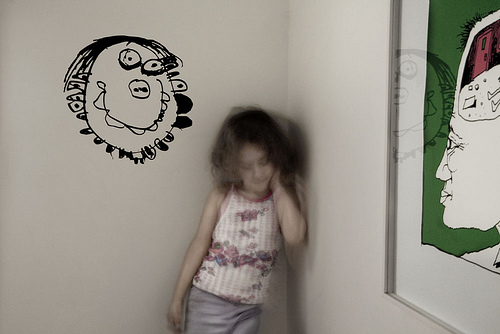
California is facing a public health crisis – children’s exposure to trauma and chronic adversity.
A growing body of research shows that exposure to trauma harms children’s developing brains so much that the effects show up decades later in the form of poor health and the perpetuation of violence and poverty.
Adverse childhood experiences – like physical or mental abuse, neglect or coping with a parent with a mental illness or substance abuse problem – increase the risk for chronic health and behavioral health problems, including heart disease, obesity, diabetes, depression, and premature death.
The toxic stress of trauma puts all of us, young and old, into continuous survival mode, where we are ready to fight, flee or freeze. Cortisol running through our bodies is an appropriate biological response to mortal danger. However, the survival response is disastrous to a child learning to read, study algebra or relate effectively with peers. Prolonged stress takes a well-documented physical toll as well, disrupting the development of the brain and other organ systems, with devastating health impacts well into adulthood.
Worse still, if children and youth are never or seldom allowed to feel safe or to turn down those stress enzymes, they become hypervigilant to their surroundings. They are ready to fight or withdraw with little provocation, always looking for danger and planning for survival. It is these young people who are being misunderstood, labeled as troublemakers and pushed out school. This must stop.
If we want to ensure that our children can thrive, prevent adult diseases, and reduce health care costs, we must address childhood trauma and chronic adversity.
Fortunately, new brain science supports what community leaders have always known: love, opportunity, community, and self-expression can transform lives and overcome the darkest experiences. Whenever we can turn off those primal reactions, our bodies rest and heal. A supportive caregiver can buffet the effects of stress, but we can heal ourselves through safe and loving experiences. We can rewire neuropathways to fire on self-respect, self-control, and, self-love, instead of survival and fear.
California needs to put in place measures to protect children and youth impacted by trauma. Children’s Defense Fund – California’s policy agenda calls for increased access to trauma-informed mental health services for children and youth. We can identify and treat the effects of trauma through multi-disciplinary teams and interventions that include self-expression combined with mental health, social services, and academic support.
Programs in Oakland and Richmond, recently identified in a report by Children’s Defense Fund-California, offer hope and healing to children and youth. These programs address trauma through acceptance, positive adult support, help with school, opportunities for creative self-expression and peer-to-peer support. They are brain transforming, and therefore, life transforming.
One student who participated in a hip-hop therapeutic setting, said: “Hip-hop changed my life/became my life/gave me a chance/saved my life.”
These programs and others like them are turning trauma into resiliency. Children and youth building resilient lives create brighter, stronger futures for themselves, their families, and their communities. Treating trauma now is a multigenerational opportunity to prevent disease, promote health and end cycles of violence and poverty.
We also need to integrate trauma-informed practices into all systems serving children — including health care, education, human services, child welfare and juvenile justice. In our schools, we can begin by finding alternatives to suspensions and expulsions. When we address the source of a child’s behavior, we are in a better place to keep them in school and help them achieve academic success. In health care, we need to equip primary care providers and mental health professionals to address the emotional burdens children and youth carry. In juvenile justice, we need programs that acknowledge the role of trauma in getting youth into the system and we need to ensure our systems are not re-traumatizing youth through punitive practices like solitary confinement.
And finally, we need to address the root causes of childhood trauma by doing what we can to prevent the severe hardship and adversity facing our children, families, and communities by tackling the often interrelated threats of poverty, racism, community violence, and discrimination.
Dr. Martin Luther King Jr. stated, “Darkness cannot drive out darkness; only light can do that. Hate cannot drive out hate; only love can do that.” We need to bring light to children and youth and leave the darkness behind.
Alex Johnson is the Executive Director for the Children’s Defense Fund-California. Follow Johnson on Twitter: www.twitter.com/AMJ_AlexJohnson





